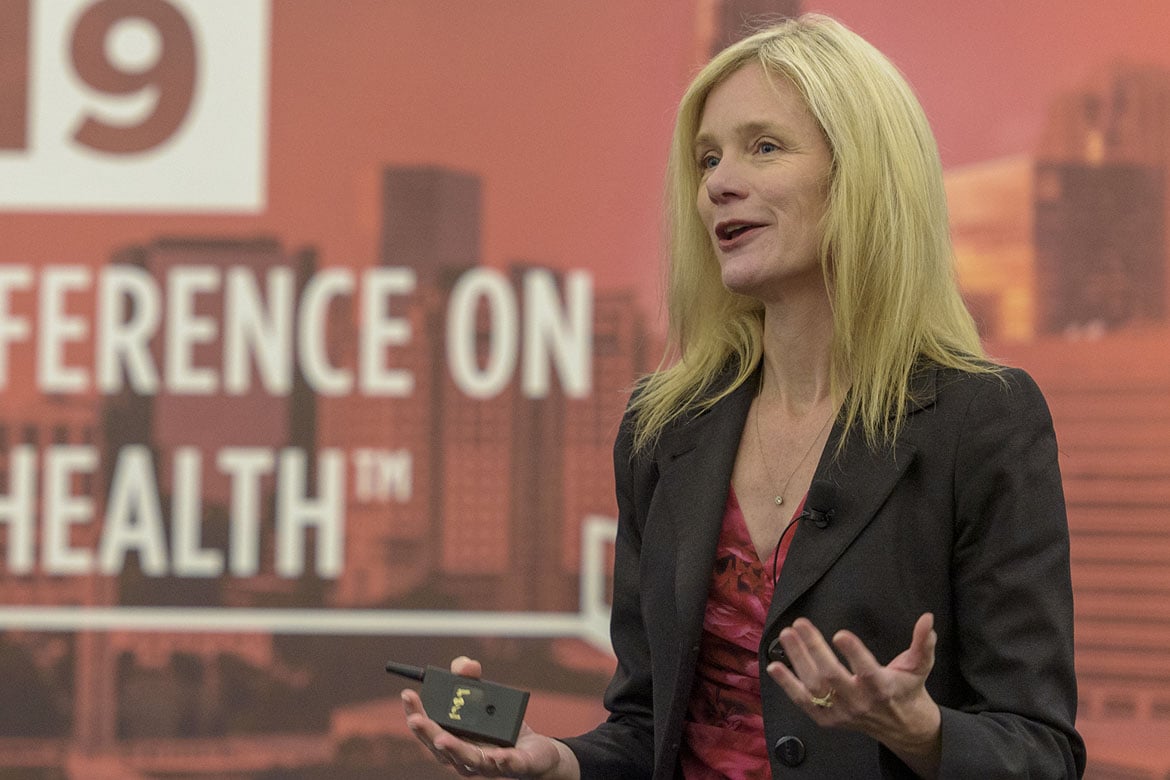The system of training physicians does little to help the next generation of doctors avoid burnout. Studies show that students entering medical school have lower rates of burnout and better quality of life than their similarly aged professional peers.
Yet by the time medical school graduation rolls around, newly minted MDs and DOs often struggle with burnout and depression and express that they have poor quality of life.
Those trends continue into residency, according to preeminent physician burnout expert Lotte N. Dyrbye, MD, MHPE, with residents in some specialties reporting burnout in numbers that exceed 60%.
With the prevalence of burnout among trainees registering in such volume, Dr. Dyrbye—a professor of medicine and medical education at the Mayo Clinic Alix School of Medicine—offered a handful of solutions that residency programs can put in place to curb the trend. She spoke at the American Conference on Physician Health, co-sponsored by the AMA, Mayo Clinic and Stanford Medicine.
Encourage strong program leadership
In a recent survey of residents at the Mayo Clinic, Dr. Dyrbye revealed that those residents who graded their program leadership higher were less likely to experience burnout.
“We found that the higher the residency program leadership score was, the lower the burnout in the residents and the higher their satisfaction, not only with the program but with the organization,” she said.
“We need to work on developing the leadership skills of our program directors and our associate program directors.”
Provide institutional social support
Creating a strong community among residents and medical students will offer a unique support system for these physicians in training.
“Many of us are arranging yoga and meditation, mindfulness training, these are worthwhile efforts that should be optional for the students to participate in,” said Dr. Dyrbye, an AMA member. “It needs to happen as part of a broader medical school and residency program effort to improve the learning and the working environment.”
Assess residents
Self-assessment is particularly difficult for physicians. Dr. Dyrbye pointed to a study of 1,100 U.S. surgeons, 89% of whom thought their well-being was average. Upon assessment, 70% of that group registered a well-being score in the bottom third of the metric.
Providing self-assessment tools such as the to help people calibrate their level of well-being is helpful.
“What we see is that providing this sort of information—giving people an opportunity to self-assess—most people found it helpful and nearly half intended to make a change in their self-care strategy as a result of having an increased awareness of where they were at in their well-being,” Dr. Dyrbye said.
Fight faculty burnout
Burned out faculty members are unlikely to display the type of behavior medical residents, fellows and medical students should be adopting.
“We need to continue to address the factors that contribute to faculty burnout so that our teachers can prioritize the education of our learners,” she said. “We need system-level solutions that improve the work environment for physicians and learners.”
Faculty members that are satisfied with their work are more likely to be able to display teaching behaviors that are associated with higher resident and medical student well-being.
“We need targeted work-place interventions,” Dr. Dyrbye said. “We need to measure well-being of faculty and learners and strive to improve factors within our sphere of influence that increase the risk of burnout or get in the way of recovery.”




